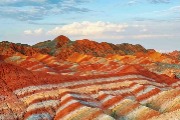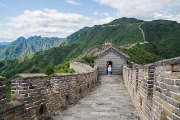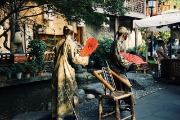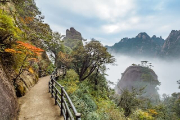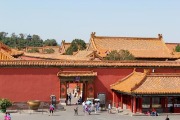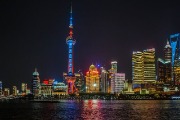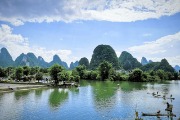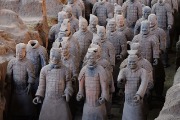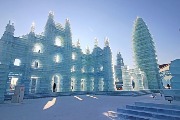Yellow Mountain (Huangshan Mountain)
This is a famous Chinese mountain that’s worth spending 3 days on.
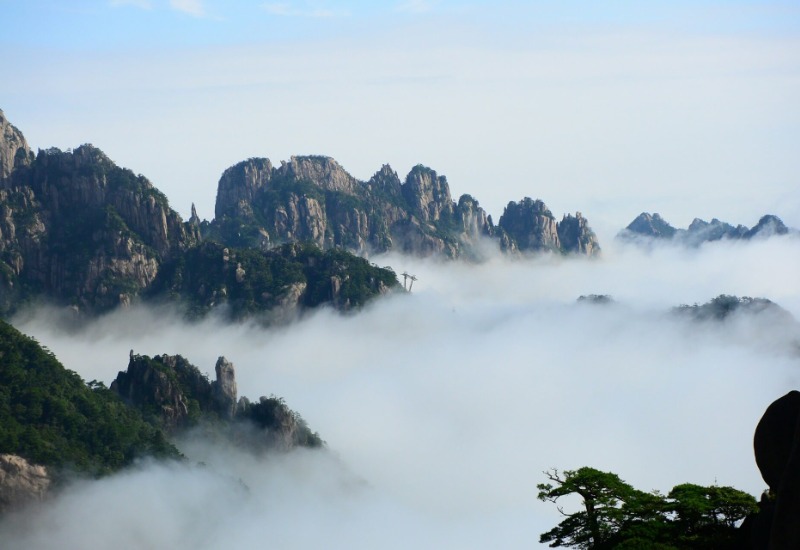
Huangshan Mountain (also called Yellow Mountain, since “Huang” means “yellow” in Chinese) is known as the “Number One Wonder of China.” What makes it so special? It’s full of strange and fascinating rock formations, plus countless pine trees growing right out of the rocks. If you’re lucky, you might even witness the breathtaking sea of clouds stretching endlessly. These stunning sights are hard to fully experience through pictures or videos. You really need to be there in person to feel the magic of China’s nature.
But don’t worry, you can get a sneak peek of Huangshan Mountain’s main routes and attractions in our article. Unlike other guides that just list random spots, we’ll take you through the best route step by step, showing you photos and explaining the value of each popular site. Plus, at the end of the article, you’ll find answers to common questions and ticket info for Yellow Mountain China (黄山).
Table of Contents
Main Attractions of Yellow Mountain
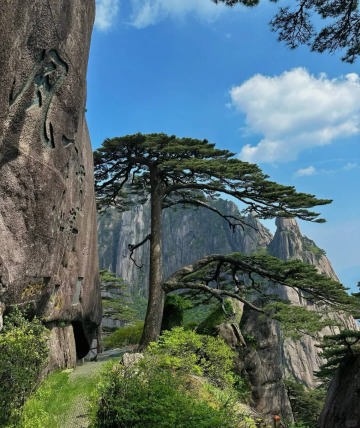
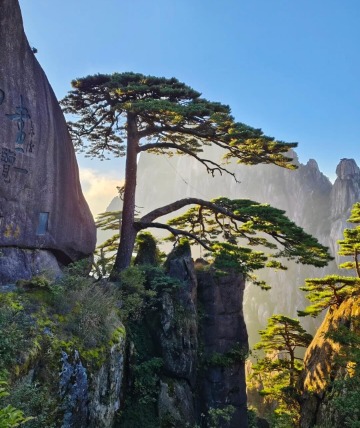
The Welcoming Pine (迎客松)
After taking the Yuping Cable Car to the top of Huangshan, the first thing you’ll see is the Welcoming Pine. This massive tree, with its thick trunk and lush branches, seems to stretch out its arms to greet visitors from afar. The Welcoming Pine is not just a symbol of Huangshan Mountain—it’s also an important cultural icon in China. You’ll find it on stamps, postcards, paintings, and other cultural items. That’s why you’ll see so many Chinese tourists eagerly posing for photos with the tree.
So, what does the Welcoming Pine mean to Chinese people? In traditional Chinese culture, pine trees symbolize longevity and resilience. But the Welcoming Pine takes it a step further—it embodies the spirit of “welcoming guests with respect and embracing all things.” Growing between Yellow Mountain’s rugged rocks, it stands tall despite its harsh surroundings. Its powerful vitality shows the Chinese belief that even in tough times, we must remain strong. Like the tree, we should always extend a “welcoming arm” to life’s challenges and opportunities, no matter how difficult the environment.
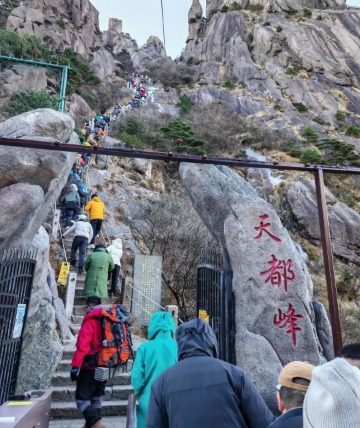
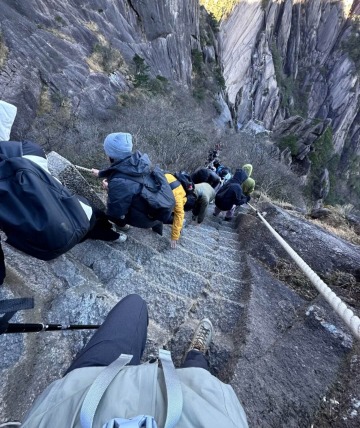
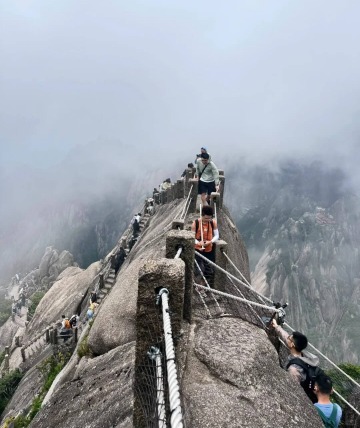
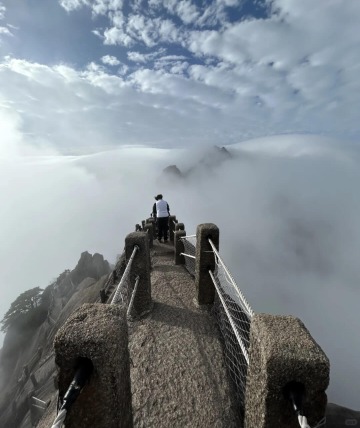
Tiandu Peak (天都峰)
After admiring the Welcoming Pine, you can head over to Tiandu Peak for a panoramic view of Yellow Mountain China. The climb can be intense—some parts have nearly a 90-degree incline, so you’ll need to use both your hands and feet to get up. But once you reach the top, you’ll be rewarded with magnificent views of the rolling mountains and the sea of clouds below. It’s truly a breathtaking sight that showcases the grandeur of Yellow Mountains China.
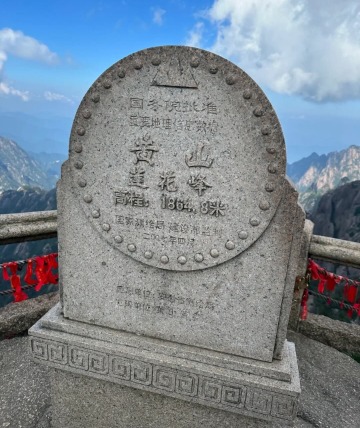
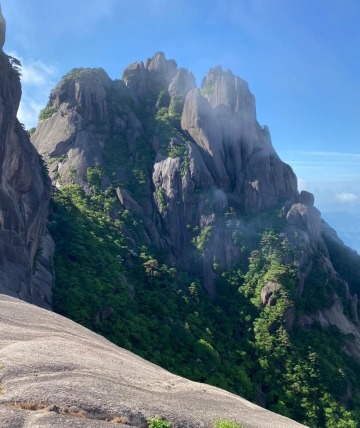
Lotus Peak (莲花峰)
After conquering Tiandu Peak, the next stop is Lotus Peak. It’s the highest peak in Yellow Mountains, and the climb is no easy feat. You’ll need to navigate winding mountain paths and steep stairs, which will test your stamina and endurance. Especially at the top, the guardrails are low, and right next to you is a sheer drop, which can be a bit nerve-wracking. But once you overcome these challenges and reach the summit, the view is indescribable. Standing there, you’ll feel an overwhelming sense of satisfaction and accomplishment. The wide-open vistas are incredible, and on a clear day, you can even see distant mountains like Tianmu Mountain, Mount Lu, Jiuhua Mountain, and the Yangtze River.
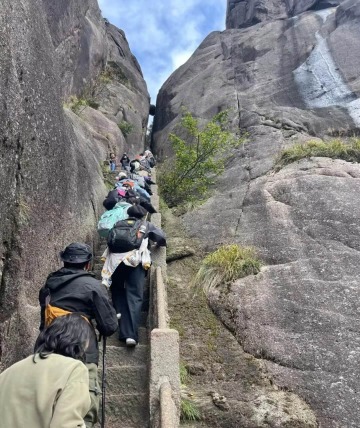
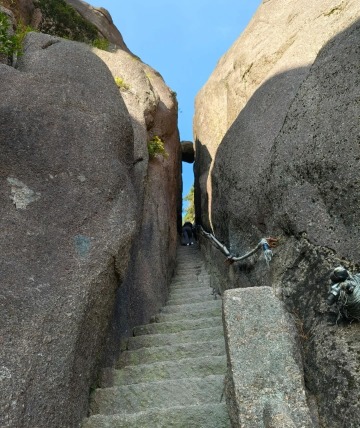
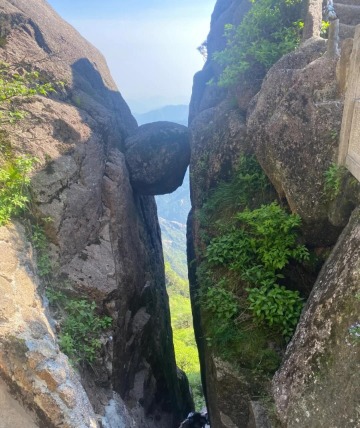
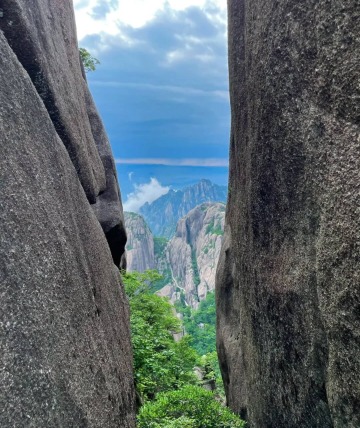
The One Line Sky (一线天)
After descending from Lotus Peak, head further ahead to reach Mount Huangshan’s One Line Sky. This narrow passage is so tight that at its narrowest point, it’s only about half a meter wide—you’ll need to turn sideways to get through. Walking through the One Line Sky, you’ll not only marvel at nature’s incredible handiwork but also enjoy a unique sense of adventure.
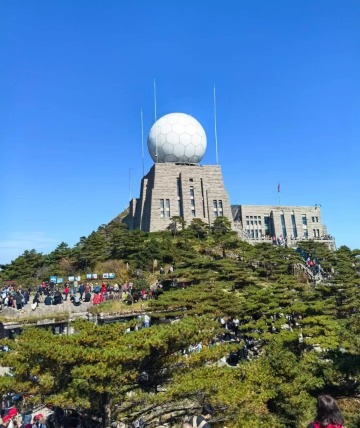
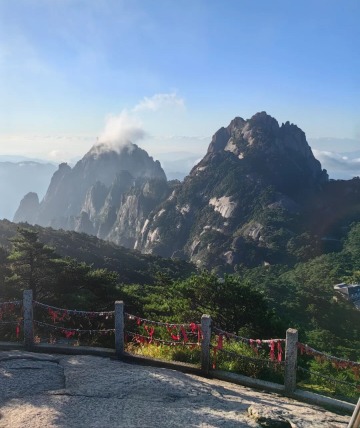
Bright Summit (光明顶)
Once you’ve passed through the One Line Sky, you’ll be on your way to Bright Summit. This is the second highest peak in Mount Huangshan, and from here, you can get a bird’s-eye view of the entire mountain range. If you reach Bright Summit in the early morning, you’ll be treated to the sight of the sun rising above the sea of clouds, with the sky turning a brilliant gold—it’s an awe-inspiring moment. In the evening, you can enjoy a stunning sunset with the sky painted in hues of red, a memory you won’t soon forget. Besides the view, there’s also a weather station at Bright Summit where you can learn about the mountain’s weather forecasts by visiting the station’s building.
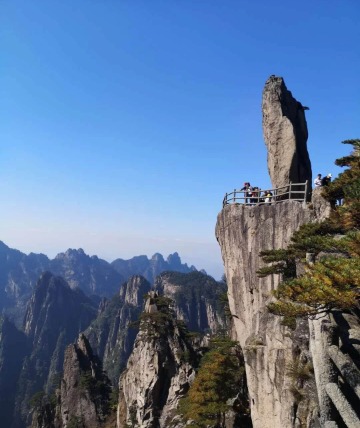
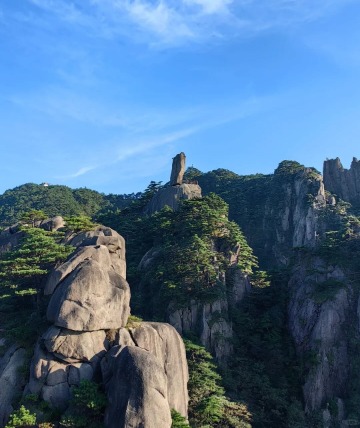
Flying Rock (飞来石)
Walking further from Bright Summit, you’ll come across a massive rock perched on the edge of a cliff. This giant stone is about 12 meters tall and weighs around 360 tons. Its base has very little contact with the ground, making it look like it could topple at any moment, yet it has remained standing for centuries, creating a thrilling and awe-inspiring sight. According to legend, this rock was once dropped by a Chinese immortal, which is why it’s called the “Flying Rock”—a truly mystical story.

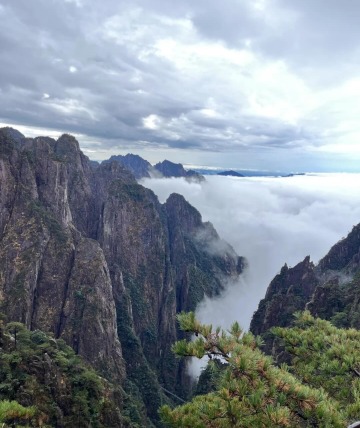
Paiyun Pavilion (排云亭)
After passing Flying Rock, you’ll reach Paiyun Pavilion. From here, you can get a breathtaking view of Yellow Mountain’s West Sea Grand Canyon. It’s also one of the best spots to catch a glimpse of the sea of clouds, although whether you’ll get to see it depends on the weather.
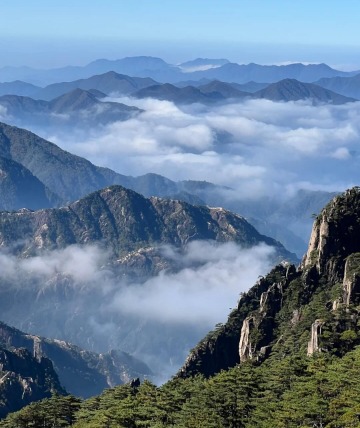
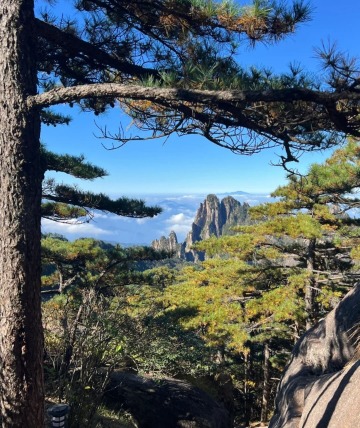
Danxia Peak (丹霞峰)
After enjoying the sea of clouds, you can continue your climb to Danxia Peak. This is one of the best spots to watch the sunrise in Huangshan Yellow Mountain. To catch the sunrise, you should aim to reach the viewing platform around 4:15 AM. The spot is a bit small, but if you arrive early, you’ll be able to claim a good spot. The sunrise usually happens around 5:00 AM. Keep in mind, though, that the climb to Danxia Peak can be tricky. Some sections are steep and lack guardrails, so be extra cautious, especially if it’s raining.
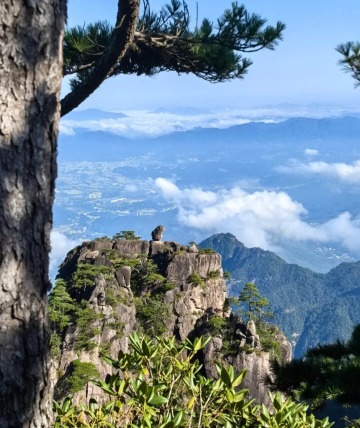
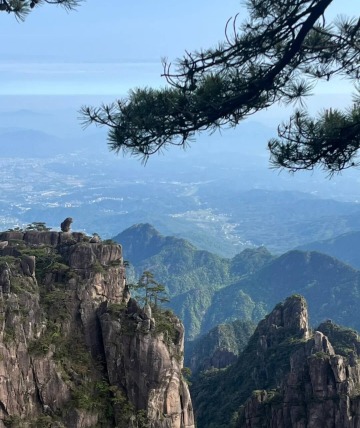
Monkey Watching the Sea (猴子观海)
After descending from Danxia Peak, head to the famous “Monkey Watching the Sea.” From a distance, you’ll spot a rock that looks like a monkey sitting quietly, gazing at the surrounding sea of clouds. That’s how it got its name—it’s a fun and unique sight to see!
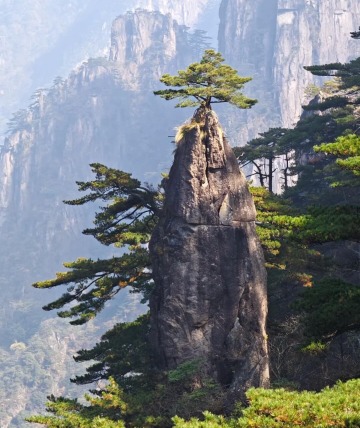
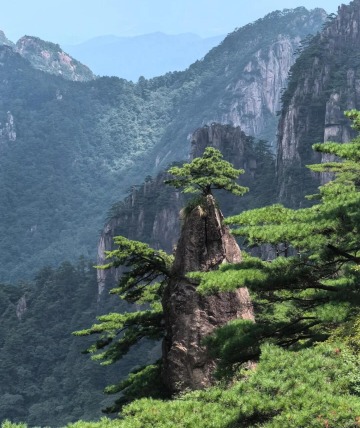
Dream Pen Blossoms (梦笔生花)
This solitary stone peak resembles a Chinese calligraphy brush dipped in ink. The upper part looks like the brush tip, while the lower part resembles the handle. On top of the “brush tip,” there’s a sturdy, ancient pine tree that looks like it’s blooming, which is how the spot got its name—“Dream Pen Blossoms.”
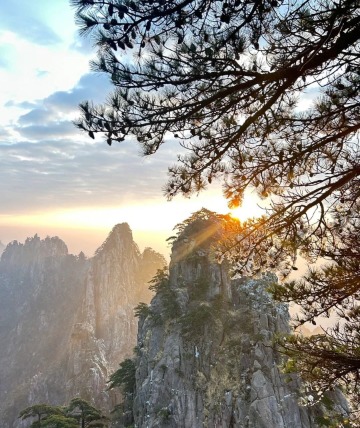
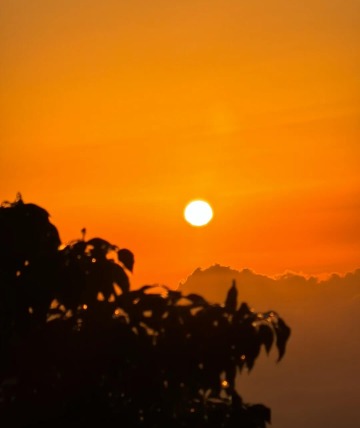
Shixin Peak (始信峰)
Shixin Peak is the final stop on your Anhui Yellow Mountain journey. Surrounding it are many of the mountain’s famous pine trees, such as the Jieyin Pine, Black Tiger Pine, Connecting Pine, Dragon Claw Pine, Sleeping Dragon Pine, and Sea-Searching Pine. These pines, along with the unique rock formations, create a truly distinctive natural landscape. After exploring Shixin Peak, you can take the Yungu Cable Car down the mountain.
Unique Landscapes of Yellow Mountain
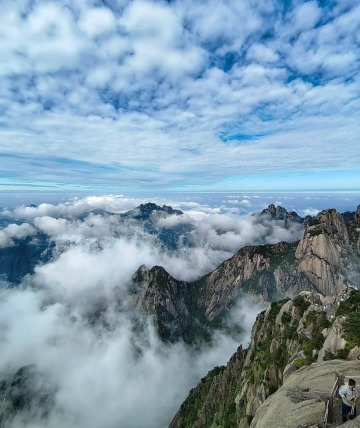
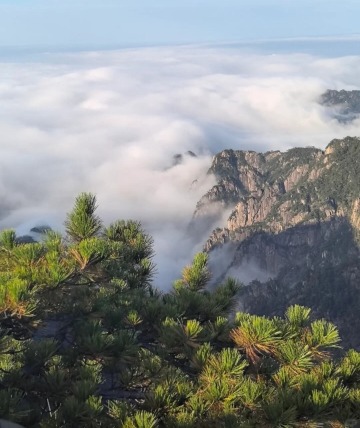
Sea of Clouds (云海)
The best time to experience Mount Huangshan’s sea of clouds is typically from November to May, especially right after rain or snow when the skies start to clear. Early mornings and evenings are the golden hours for watching the clouds, as temperature changes and frequent cloud movements create mesmerizing views. Some of the best spots to enjoy the sea of clouds include Tiandu Peak, Bright Summit, Qingliangtai, Paiyun Pavilion, and Bai’e Ridge. These locations not only offer wide-open vistas but also allow you to capture the sea of clouds from different angles, each offering a unique perspective.
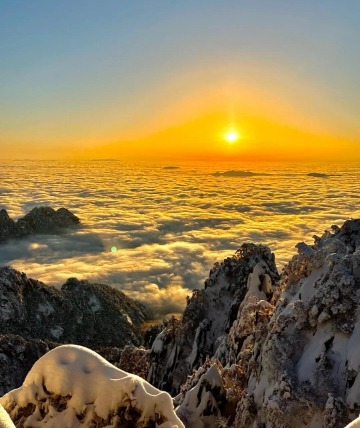
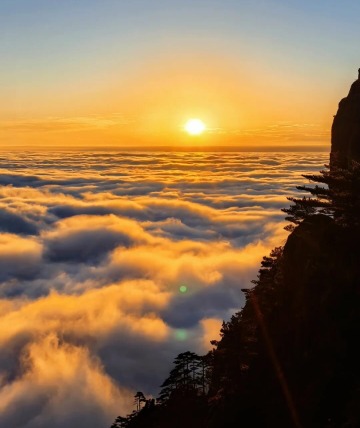
Sunrise (日出)
The sunrise in Huangshan China Yellow Mountains is a visual feast. In the early morning mist, the first rays of sunlight break through, lighting up the entire landscape. The sea of clouds roils, the mountains rise and fall, and everything feels in perfect harmony. It’s a moment that’s truly breathtaking, where nature’s beauty seems to come alive.
Yellow Mount Tour Routes
1. Starting from the Front Mountain (60% of visitors choose this route)
The route introduced in this article follows the front mountain as the starting point, ending at the back mountain, which is the most common choice for visitors. The sequence is as follows: take a bus from the Huangshan transfer center to the Yuping Cable Car station, then ride the cable car up the mountain. From there, the order of the attractions is:
Welcoming Pine → Tiandu Peak → Lotus Peak → One Line Sky → Bright Summit → Flying Rock → Danxia Peak → Dream Pen Blossoms → Monkey Watching the Sea → Shixin Peak. After visiting Shixin Peak, take the Yungu Cable Car down the mountain.
2. Starting from the Back Mountain (40% of visitors choose this route)
If you choose to start from the back mountain, the sequence of attractions will be the reverse of the front mountain route.
Ways to Explore Huangshan Mountain
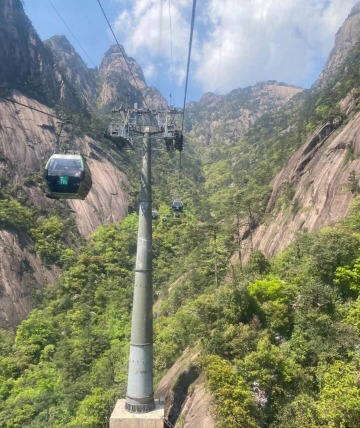
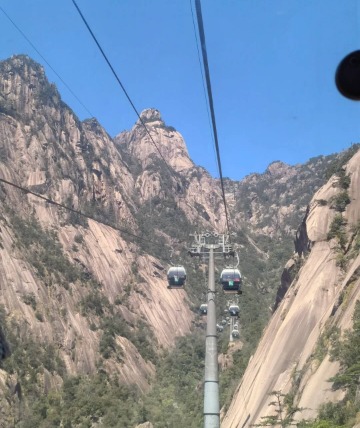
Yuping Cable Car (玉屏索道)
The Yuping Cable Car is the first cable car in Huangshan Yellow Mountain, opened in 1996 and renovated in 2015. From the cable car, you can enjoy incredible views of the mountain peaks, unique rock formations, and the mist-covered landscapes of the mountain. The views during sunrise and sunset are especially mesmerizing!
- Peak season (March 2 to October 31): 6:20 AM – 5:40 PM
- Off-season (November 1 to February 28): 7:20 AM – 4:40 PM
- One-way ticket price: 90 CNY (approx. 12 USD) per person
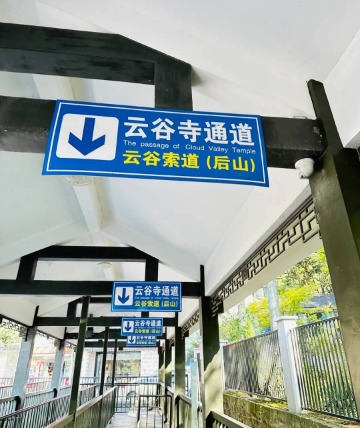

Yungu Cable Car (云谷索道)
The Yungu Cable Car is another major cable car for ascending and descending Yellow Mount, and it takes you to the back mountain.
- Peak season (March 2 to November 30): 6:00 AM – 5:10 PM
- Off-season (December 1 to March 1): 8:00 AM – 4:40 PM
- One-way ticket price: 80 CNY (approx. 11 USD) per person
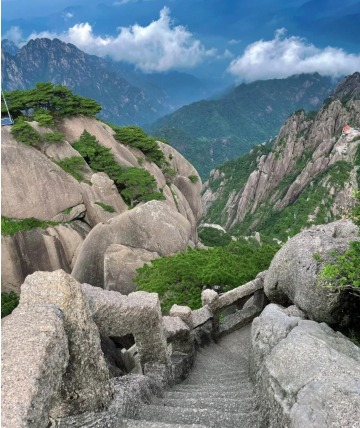
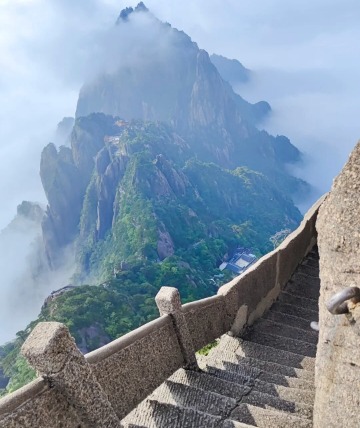
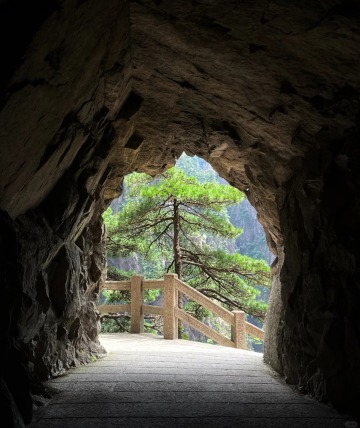
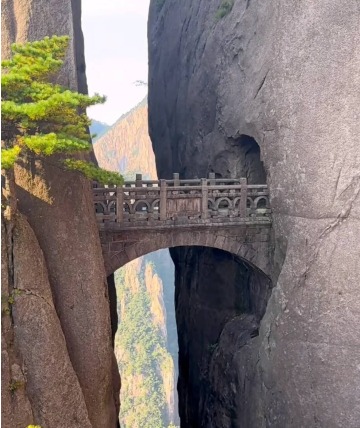
Hiking Yellow Mount (徒步黄山)
Hiking routes in Yellow Mountains China vary in difficulty, with different experiences on the front and back mountains. The front mountain trails are steeper, making them perfect for those looking for a challenge, while the back mountain is gentler and better suited for a more relaxed visit. Hiking in Yellow Mount allows you to get up close to the unique pines rooted in the rocks, walk through fascinating rock formations, and immerse yourself in the misty sea of clouds.
Since Huangshan’s natural environment is very fragile, it’s important to be environmentally conscious during your hike. Please avoid littering, refrain from damaging the plants, and help protect this beautiful natural heritage.
Attractions Around Mount Huangshan
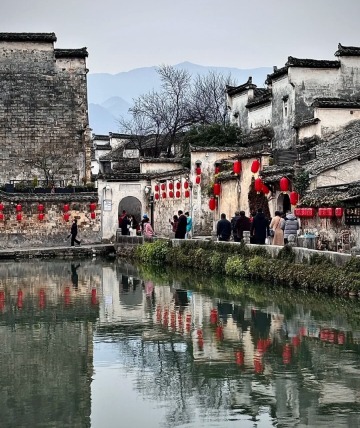

Hongcun Village (宏村)
Hongcun Village is about 50 kilometers from Huangshan, and many visitors choose to visit this charming village after hiking the mountain to admire traditional Hui-style architecture. In 2000, Hongcun was listed as a UNESCO World Heritage site. The village is home to a large number of well-preserved ancient residences, ancestral halls, and other traditional buildings. Visitors can also experience local cultural activities, such as dragon and lion dances during the Chinese New Year and dragon boat races during the Dragon Boat Festival.
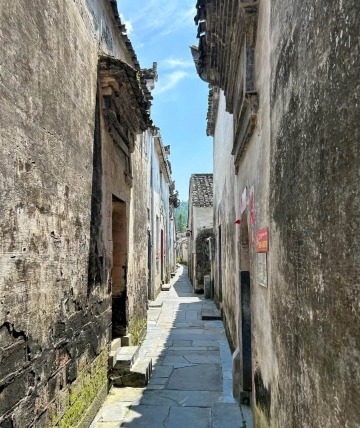
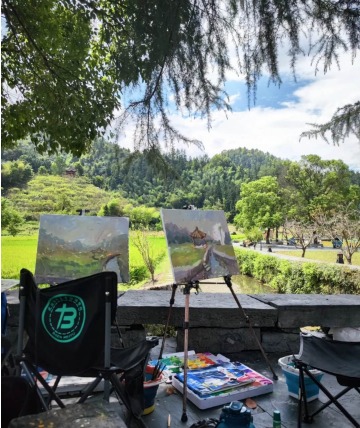
Xidi Village (西递村)
Xidi Village is about 18 kilometers from Hongcun, a 20-30 minute drive. Though often mentioned together, Hongcun and Xidi are two separate villages. Xidi is famous for its well-preserved Ming and Qing dynasty architecture and its authentic rural Chinese lifestyle. You can stroll along the stone-paved streets and admire the ancient buildings made of blue bricks and grey tiles. The village’s architectural art, especially wood carvings, stone carvings, and brick carvings, showcases the exceptional craftsmanship of traditional Chinese architecture. It’s a great place to observe these fine details up close.
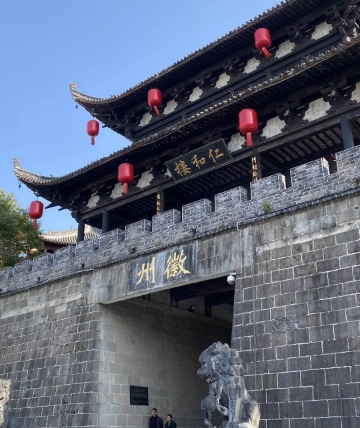
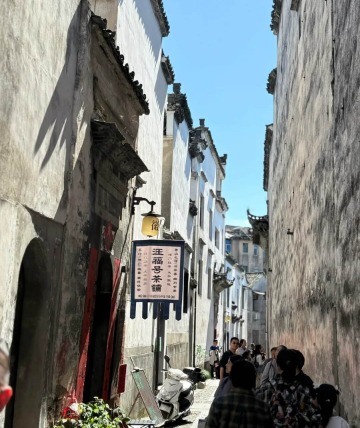
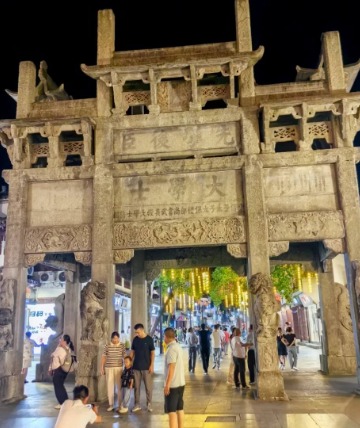
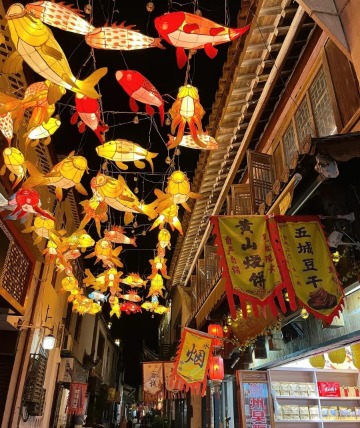
Huizhou Ancient City (徽州古城)
Huizhou Ancient City is about 80 kilometers from the Huangshan scenic area. It is regarded as one of the “Four Best-Preserved Ancient Cities in China,” alongside Langzhong in Sichuan, Lijiang in Yunnan, and Pingyao in Shanxi. Huizhou Ancient City was founded during the Qin Dynasty over 2,000 years ago. The city’s architecture is primarily in the Hui style, and it features four city gates in the east, west, south, and north. You can still find historical remnants such as the old city walls, city gates, ancient streets, and alleys, which offer a glimpse into the city’s rich past.
Huangshan Travel Itinerary
4-Day Trip
Day 1: Huangshan (Front Mountain Area)
Explore the iconic attractions on the front mountain, including Welcoming Pine, Tiandu Peak, Lotus Peak, and more.
Day 2: Huangshan (Back Mountain Area)
Hike or take the cable car to the back mountain, visiting spots like Flying Rock, Shixin Peak, Monkey Watching the Sea, and other highlights.
Day 3: Hongcun (morning) → Xidi (afternoon)
In the morning, visit Hongcun Village to admire its traditional Hui-style architecture. In the afternoon, head to Xidi Village, famous for its well-preserved Ming and Qing dynasty buildings.
Day 4: Huizhou Ancient City (full day)
Spend the day exploring Huizhou Ancient City, one of China’s most well-preserved ancient cities, known for its historical architecture and rich cultural heritage.
Accommodation in Yellow Mountain
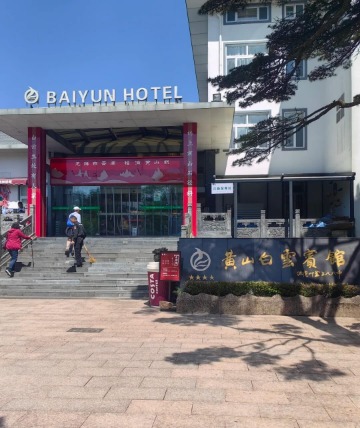

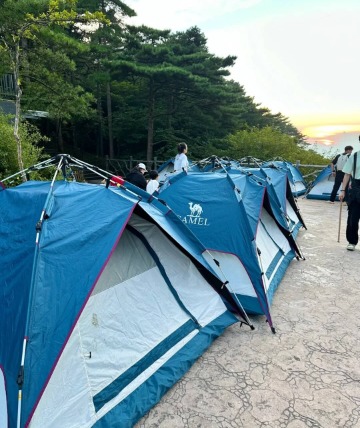

If you want to catch the sunrise or sunset on Huangshan, I recommend staying overnight at the mountain summit. There are several hotels at the top, including Baiyun Hotel, Xihai Hotel, Shilin Grand Hotel, and Bright Summit Mountain Lodge. If you prefer not to stay in a hotel, you can also rent a tent at the mountain top for an overnight stay.
If you choose to stay at the foot of Huangshan, you can opt for a hot spring hotel. After a day of hiking, you can relax in the hot springs, which is a perfect way to unwind and rejuvenate.
FAQs About Yellow Mountains
1. Where is Yellow Mountain located?
Yellow Mountain is in the eastern part of China, in Anhui Province.
2. Why is Yellow Mountain China famous?
Yellow Mountain China is famous for four things: strange pines, weird rocks, sea of clouds, and hot springs. The mountain is mainly made of granite, and after millions of years of geological changes, it formed its unique landscape. Among the weird rocks, many pine trees grow. The surrounding sea of clouds is endless, making the whole scene unforgettable.
3. How long does it take to climb Huangshan?
It takes about 8 to 10 hours.
4. Is Huangshan difficult to climb?
A bit. The mountain paths are rough and steep, especially on the Tian Du Peak. It has cliffs that drop straight down, with slopes as steep as 85 degrees. It’s the hardest peak to climb. Plus, the weather on Huangshan can change quickly, so climbers need to be ready for fog, rain, or other bad conditions that could make hiking harder.
5. How many days do you need for Huangshan Mountain?
You can spend anywhere from 1 to 3 days there. If you want to take your time and enjoy the views or catch the sunrise and sunset, I’d recommend staying 3 days.
How to Get to Mount Huangshan
By Plane:
The main airport for reaching Huangshan is Huangshan Tunxi Airport. It’s about a 20-minute drive from downtown Huangshan. During the day, there are shuttle buses that go directly to the Huangshan Scenic Area, making it very convenient.
By High-Speed Train:
There are two main high-speed rail stations in Huangshan: Huangshan North Station and Huangshan West Station. Both stations have direct buses that take you to the Huangshan Scenic Area.
Hours & Fees
Hours
December 1st – March 1st (including weekends and New Year’s Day): The hours are from 8:00 AM to 4:40 PM every day. However, since the winter visiting time is shorter, the entrance for hiking tickets closes at 3:00 PM.
March 2nd – November 30th: On weekdays (Monday to Friday), the hours are from 7:00 AM to 5:10 PM. On weekends and public holidays, the hours are from 6:30 AM to 5:40 PM.
Time Required
1-3 days
Fees
Winter Season (December 20, 2023 – January 20, 2024): Full ticket is 150 CNY (around 21 USD).
Other Seasons (January 21, 2024 – December 19, 2024): Full ticket is 190 CNY (around 26 USD).
Practical Tips
If your budget allows, I recommend staying overnight on the mountain. Whether you go for a more expensive private room or a budget-friendly bed, you’ll get to enjoy the beautiful starry sky at night.
Be sure to check the weather forecast. If it’s going to rain for a whole week, it could really affect your hike. In that case, consider visiting nearby ancient villages like Hongcun or Xidi instead.
If you’re visiting Huangshan, make sure to carry some cash. Just a small amount should be enough, because some areas have poor signal, and you might not be able to use mobile payments.

